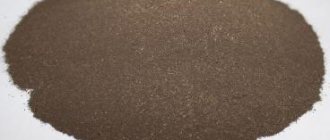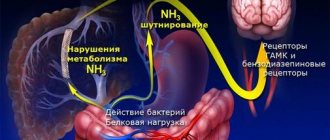Product Description
Sodium hyposulfite appears in the form of colorless crystals that dissolve well in water. It is widely used in industry and medicine. Considered a strong reducing agent. Hyposulfites (thiosulfates) are unstable and therefore do not occur in nature.
Chemical formula : Na2S2O3 or Na2SO3S Synonyms : sodium thiosulfate, antichlorine, sodium sulfide trioxosulfate, sodium disulfate.
Pharmacodynamics and pharmacokinetics
Sodium thiosulfate - what is it?
Sodium thiosulfate is a salt of thiosulfuric acid and sodium, which is used as an antihistamine and detoxifying .
Forms slightly toxic or completely harmless compounds with cyanides, halogens, and heavy metal salts. A solution of sodium thiosulfate has found application in medicine as an antidote to I, Hg, Cr, phenols , aniline, sublimate, benzene, and hydrocyanic acid.
Sodium thiosulfate formula. - Na2SO3S or Na2S2O3.
Pharmacodynamics
In case of poisoning with Pb, Hg, As compounds, non-toxic sulfites are formed. In case of poisoning with hydrocyanic acid and its salts, detoxification is carried out through the utilization of cyanide.
The latter, with the participation of the enzyme rhodonase , which exhibits maximum activity in the liver, is converted into a relatively non-toxic thiocyanate ion.
The body is capable of neutralizing cyanide itself, but natural cleansing occurs very slowly: the activity of the rhodonase system in case of cyanide poisoning is not enough for detoxification.
To stimulate the reaction catalyzed by rhodonase, exogenous sulfur donors (in particular, sodium thiosulfate) are introduced into the body.
Anti-scab activity is determined by the ability of sodium thiosulfate in an acidic environment to decompose into sulfur dioxide and sulfur. Both of these substances are harmful to both adult scabies mites and their eggs.
Pharmacokinetics
After administration of the drug into a vein, sodium thiosulfate is distributed in the extracellular space and is excreted unchanged from the body by the kidneys. Biological T1/2 - 0.65 hours.
The substance is non-toxic. Studies in dogs have shown that hypovolemia . The decrease in blood volume is most likely due to the osmotic diuretic effect of the drug.
It is used in a complex of means to eliminate the consequences of poisoning in patients with alcoholic delirium .
general information
Thiosulfate (hyposulfite) is an inorganic compound that is the sodium salt of thiosulfuric acid. The substance is a colorless, odorless powder, which upon closer examination turns out to be transparent monoclinic crystals.
Hyposulfite is an unstable compound that does not occur in nature. The substance forms a crystalline hydrate, which, when heated above 40 °C, melts in its own crystalline water and dissolves. Molten sodium thiosulfate is prone to supercooling, and at a temperature of about 220 ° C the compound is completely destroyed.
Sodium thiosulfate, instructions for use
It is used externally, intravenously and orally.
External use is indicated for scabies . According to the instructions for sodium thiosulfate, a 60% solution should be rubbed into the skin of the limbs and torso, and then, when it dries, moisten the treated surfaces with a 6% hydrochloric acid solution.
Sodium thiosulfate is prescribed intravenously and orally to cleanse the body during intoxication.
Sodium thiosulfate is administered intravenously as a 30% solution. The dose varies from 5 to 50 ml and depends on the severity of intoxication and the type of toxic substance.
For oral administration use a 10% solution. A single dose is 2-3 grams of sodium thiosulfate.
Sodium thiosulfate in gynecology
For gynecological pathologies, the drug is used, as a rule, as an addition to the main treatment.
Sodium thiosulfate in gynecology is used intravenously as part of endocrine infertility treatment programs. In this case, the patient is also prescribed Actovegin intramuscularly, plasmapheresis and transorbital electrophoresis of nicotinic acid.
To eliminate cysts in the ovaries, the product is used in combination with Dimexide , Vishnevsky ointment and Diclofenac .
For genital tuberculosis, it is included in nonspecific therapy: the patient is prescribed enzyme preparations ( ronidase or lidase ), antioxidants (vitamin E) and sodium thiosulfate. The latter is injected into a vein, 10 ml every other day or once or twice a day. During the course of treatment, a woman should receive from 40 to 50 infusions of the drug.
In some cases, sodium thiosulfate is used in the form of microenemas. Some doctors recommend this method of treatment for adhesions in the pelvis and inflammatory diseases of the reproductive system.
The procedure is carried out using a 10% solution. Single dose - 30-50 ml. Before injection into the anus, the solution is heated to a temperature of 37-40ºC in a water bath. It should be remembered that this is not a cleansing enema, therefore, the drug must be completely absorbed into the body through the intestinal mucosa.
Reviews allow us to conclude that the use of the drug for endometriosis as an anti-inflammatory and absorbable agent is a good alternative to treatment with hormonal drugs.
An important property of the drug is the ability to prevent the development of allergic reactions that may occur during the complex treatment of certain female diseases.
The versatility of using sodium thiosulfate allows you to choose the most suitable method of application in each specific case: in the form of a microenema, intravenously or during physiotherapeutic procedures (electrophoresis).
Sodium thiosulfate for psoriasis
For psoriasis, the advisability of using sodium thiosulfate is explained by the fact that the drug allows you to thoroughly cleanse the body, and this in turn helps to strengthen the immune system and alleviate the course of most chronic diseases.
Reviews from people who took the solution indicate a significant improvement in their condition. Some patients claim that by taking sodium thiosulfate, they were able to completely get rid of psoriasis .
However, given the chronic nature of the disease, it can be assumed that we are talking about achieving stable remission.
How does the drug work? Firstly, when entering the intestines, sodium thiosulfate attracts waste products and toxic substances that enter the digestive tract from lymph, blood, intercellular and interstitial fluid.
Secondly, due to the presence of sulfur molecules, which have a pronounced reducing effect, it binds heavy metals well.
Thirdly, sodium thiosulfate enhances intestinal motility and helps to liquefy its contents, thereby having a laxative effect and accelerating the removal of toxins from the body. As a result, the patient’s internal organs and systems begin to function better.
In addition, the drug slows down the absorption of toxic substances through the intestinal mucosa and prevents them from entering the blood.
The course of treatment of psoriasis with sodium thiosulfate lasts from 5 to 12 days. The daily dose is 10-20 ml (depending on the tolerability of the drug and the patient’s body weight).
Before use, the solution is diluted in 100 ml of water. To improve the unpleasant taste, you can add a small amount of lemon juice. It is better to take the medicine at night. If the laxative effect is pronounced, the dose is reduced to 10 ml/day.
How to take sodium thiosulfate?
The drug is taken internally to cleanse the blood and lymph. This treatment can improve your overall well-being, as well as the condition of your hair, nails and skin, clear your head, get rid of depression and eliminate many allergic reactions.
To cleanse the body, it is recommended to drink the drug for 10 days. Single dose - 0.5 ampoule. Before use, the solution is diluted in 100 ml of water.
The first time the drug is taken 30-60 minutes before breakfast, the second - 30-60 minutes before dinner or 2 hours after it.
Food additive E539
Sodium thiosulfate is not a widely used food additive and is not freely available due to the instability of the compound and the toxicity of its breakdown products. Hyposulfite is involved in technological processes for the production of edible iodized salt and bakery products as an acidity regulator and anti-caking agent.
Additive E539 functions as an antioxidant and preservative in the production of canned vegetables and fish, desserts and alcoholic beverages. This substance is also part of the chemicals used to treat the surface of fresh, dried and frozen vegetables and fruits.
Preservative and antioxidant E539 is used to improve the quality and increase the shelf life of such products:
- fresh and frozen vegetables, fruits, seaweed;
- candied fruits, dried fruits, nuts, seeds;
- vegetables, beans, mushrooms and seaweed, preserved in vinegar or oil;
- jams, jellies, marmalades, candied fruits, fruit purees and fillings;
- fresh, frozen, smoked and dried fish, seafood, canned food;
- flour, starches, sauces, seasonings, vinegar, mustard;
- white and cane sugar, sweeteners (dextrose and fructose), sugar syrups;
- fruit and vegetable juices, sweet water, low-alcohol drinks, beer, cider, grape wines.
When producing table iodized salt, the food additive E539 is used to stabilize iodine, which can significantly extend the shelf life of the product and preserve its nutritional value. The maximum permissible concentration of E539 in table salt is 250 mg per 1 kg.
Best materials of the month
- Coronaviruses: SARS-CoV-2 (COVID-19)
- Antibiotics for the prevention and treatment of COVID-19: how effective are they?
- The most common "office" diseases
- Does vodka kill coronavirus?
- How to stay alive on our roads?
In baking, sodium thiosulfate is actively used as part of various additives to improve product quality. Baking improvers are either oxidative or reductive. Anti-caking agent E539 is a restorative improver that allows you to change the properties of wheat flour.
Dough made from dense flour with short-tearing gluten is difficult to process, cakes, does not reach the required volume and cracks during baking. Anti-caking agent E539 destroys disulfide bonds and structures gluten proteins, as a result of which the dough rises well, the crumb becomes loose and elastic, and the crust does not crack during baking.
At enterprises, an anti-caking agent is added to flour along with yeast immediately before kneading the dough. The thiosulfate content in flour is 0.001-0.002% of its mass, depending on the manufacturing technology of the bakery product. Sanitary standards for the E539 additive are 50 mg per 1 kg of wheat flour.
Anti-caking agent E539 is used in technological processes in strict dosages, so there is no risk of thiosulfate poisoning when consuming flour products. Flour intended for retail sale is not processed before sale. Within normal limits, the supplement is safe and does not have a toxic effect on the body.
special instructions
In case of cyanide poisoning, the antidote should be administered without delay, otherwise it can be quickly fatal.
The patient should be closely monitored for the next 24 to 48 hours due to the possibility that symptoms of cyanide poisoning may recur. If symptoms recur, sodium thiosulfate is re-administered at half the dose.
Qualitative reaction to sodium thiosulfate
Dry sodium thiosulfate may have a distinctive odor, causing some to doubt the substance's authenticity. Some people even wonder if they bought sodium acetate .
iodine on it . As a result of a chemical reaction, the latter should become discolored.
To check the authenticity of sodium acetate, the substance is mixed with dry phenolphthalein and heated on a burner. As a result, sodium acetate will melt and phenolphthalein will turn red.
Receipt
- oxidation of Na polysulfides;
- boiling excess sulfur with Na2SO3:
Na2SO3 + S → Na2S2O3
- interaction of H2S and SO2 with NaOH (by-product in the production of NaHSO3, sulfur dyes, during the purification of industrial gases from S):
4SO2 + 2H2S + 6 NaOH → 3Na2S2O3 + 5H2O
- boiling excess sulfur with sodium hydroxide:
4 S + 6 NaOH → 2Na2S + Na2S2O3 + 3H2O then, by the above reaction, sodium sulfite adds sulfur to form sodium thiosulfate.
At the same time, during this reaction, sodium polysulfides are formed (they give the solution a yellow color). To destroy them, SO2 is passed into the solution.
- Pure anhydrous sodium thiosulfate can be prepared by reacting sulfur with sodium nitrite in formamide. This reaction proceeds quantitatively (at 80 °C for 30 minutes) according to the equation:
2NaNO2 + 2 S → Na2S2O3 + N2O
- dissolution of sodium sulfide in water in the presence of atmospheric oxygen:
2Na2S + 2 O2 + H2O → Na2S2O3 + 2 NaOH
Analogs
Level 4 ATC code matches:
Acyzol
Methylene blue
Unithiol
Naloxone
Zorex Morning
Zorex
Algisorb , Amylnitrite , Braidan , Glathion , Dipiroxime , Carboxim , Lobelin , Naloxone , Sodium nitrite , Pelixim , Pentacin , Unithiol , Ferrocin , Amber-antitox .
Sodium thiosulfate intravenously and alcohol
One of the most effective ways to get rid of alcohol addiction is the so-called conditioned reflex therapy (conditioned reflex therapy). Treatment boils down to the fact that the patient is given drugs that, in combination with alcohol, cause a lot of unpleasant sensations: nausea, vomiting, hand tremors, cough, heart rhythm disturbances, sweating, etc. As a result, a stable aversion to alcohol is formed.
However, most drugs that are used to treat alcoholism have contraindications, and their use is often accompanied by adverse reactions from the kidneys and liver.
In comparison with such agents, sodium thiosulfate is absolutely non-toxic. The only contraindication to its use is individual intolerance.
The drug promotes the formation of negative reflexes to alcoholic drinks from the nervous system and gastrointestinal tract, but does not cause any harm to the body.
It usually takes 16 to 20 days to break a bad habit. Treatment is carried out on an outpatient basis every day.
Sodium thiosulfate is administered intravenously, the dose is selected individually. Immediately after completion of the procedure, the patient is given 20-30 g of vodka to drink to monitor his reaction to alcohol intake.
As a rule, the first unpleasant sensations occur after 2-3 days of treatment. Thus, a stable aversion to alcohol gradually develops.
16-20 days after the start of the course, the number of injections is reduced to three times a week and then - gradually - to once a month.
Treatment with hyposulfite has no age restrictions. At the same time, relapses are not observed in patients who have completed the full course of treatment. The drug is easily tolerated even by older people with various somatic diseases.
Physical and chemical properties
It has the appearance of colorless crystals. Forms three modifications: monoclinic α (a = 0.8513, b = 0.8158, c = 0.6425, β = 97.08°, z = 4, space group P21/c), as well as β and γ. The α modification transforms into β at a temperature of 330 °C, β transforms into γ at 380 °C. The density of the α-modification is 2.345 g/mol.
Soluble in water (50.1 g/100 ml (0 °C), 70.2 g/100 ml (20 °C), 231.8 g/100 ml (80 °C)).
Molar mass 248.17 g/mol (pentahydrate). At 48.5 °C, the crystalline hydrate dissolves in its water of crystallization, forming a supersaturated solution; dehydrates at about 100°C.
When heated to 220 °C, it decomposes according to the following scheme:
4Na2S2O3 → 3Na2SO4 + Na2S + 4 S
Sodium thiosulfate is a strong reducing agent:
With strong oxidizing agents, such as free chlorine, it is oxidized to sulfates or sulfuric acid:
Na2S2O3 + 4 Cl2 + 5H2O → 2H2SO4 + 2 NaCl + 6 HCl
With weaker or slow-acting oxidizing agents, for example, iodine, it is converted into salts of tetrathionic acid:
2Na2S2O3 + I2 → Na2S4O6 + 2 NaI
The above reaction is very important, as it serves as the basis for iodometry. It should be noted that in an alkaline environment, the oxidation of sodium thiosulfate with iodine can proceed to sulfate.
It is impossible to isolate thiosulfuric acid (hydrogen thiosulfate) by the reaction of sodium thiosulfate with a strong acid, since it is unstable and immediately decomposes into water, sulfur and sulfur dioxide:
Na2S2O3 + H2SO4 → Na2SO4 + H2O + S + SO2
Molten crystalline hydrate Na2S2O3·5H2O is very prone to supercooling.
Using a drug for weight loss
Proponents of cleansing the body at home with sodium thiosulfate claim that the drug not only removes all the “dirt” accumulated in it from the body, but also helps to remove extra pounds.
Is it so? Most likely, the whole point here is not the cleansing effect, but the fact that the drug, when taken orally, acts like a regular laxative. But the question of the advisability of using laxatives for weight loss is quite controversial.
Most doctors provide convincing evidence that it is impossible to solve the problem of excess weight in this way. But the result of self-medication may well be dehydration, magnesium deficiency, chronic constipation, and imbalance of water and electrolytes.
In general, if you succeed in losing weight, it will only be through simple manipulation of the amount of water and intestinal contents. Sodium thiosulfate is simply not capable of removing fat deposits.
However, there are still people who want to lose weight with the help of the drug. The solution is taken by diluting the contents of the ampoule in 200 ml of water. Half the dose is drunk about an hour before breakfast, the rest - an hour before dinner or a couple of hours after it, at night. The course usually lasts 10-12 days.
If we analyze the reviews about sodium thiosulfate, we can conclude that the majority of those who took it for the purpose of losing weight did not notice any significant changes in the body: many noted that in a ten-day course they managed to lose from 2 to 5 kg.
The positive aspects of cleansing are the feeling of lightness that appears by 4-6 days, as well as an improvement in the condition of the skin (some women claim that by the end of the course their face was significantly cleared of acne).
Sodium thiopental - briefly about the drug
A desensitizing, antitoxic and anti-inflammatory drug - this is how thiopental is used in medicine. It is prescribed for severe poisoning. This remedy is able to “combine” with molecules of arsenic, thallium, mercury, lead and remove them from the body. For substances such as aniline, benzene, iodine, bromine, copper, hydrocyanic acid, sublimate, phenol, thiopetal is an antidote, that is, it inhibits their effect. The chemical compound sodium thiopental is yellowish granules with a bitter-salty taste and odorless. It is easily soluble in water and insoluble in alcohol. Pharmacy version -30% solution. It is used for intravenous administration in cases of poisoning to relieve symptoms of intoxication and to remove toxins and heavy metals from the body. Why does this happen?
The sulfur molecules that are present in the composition are a good and fairly strong reducing agent.
In addition, the solution acts as a laxative - peristalsis is enhanced and the intestinal contents are liquefied. As a result, the processes of removing products from the body that disrupt the functioning of the digestive tract and the body as a whole are accelerated and the process of their absorption into the blood slows down. In addition, sodium thiosulfate is successfully used in gynecology: for the treatment of cysts and infertility. When applied externally, the drug can cure scabies.
Reviews of sodium thiosulfate
Reviews of intravenous sodium thiosulfate indicate the high effectiveness of the drug in cases of poisoning and in cases where it is used to treat alcohol dependence.
Good reviews on forums are also left by those who were forced to use the drug to treat psoriasis, allergic diseases and diseases of the female genital area.
In gynecology, sodium thiosulfate is used to treat endometriosis, endocrine infertility and a number of inflammatory diseases. Moreover, in some cases the drug is prescribed to be administered intravenously, in some - using electrophoresis or in the form of microenemas.
On the Internet you can also find calls for using the product for weight loss and cleansing the body as a whole. However, reviews from those who took sodium thiosulfate indicate that such treatment methods do not produce any special results. The maximum that most patients can achieve is bowel cleansing.
For whom is it intended and for whom is it contraindicated?
The drug is used to suppress the reaction to poisoning:
- cyanide;
- hydrocyanic acid;
- lead;
- cadmium;
- mercury;
- arsenic;
- lithium;
- aluminum, etc.
Sodium thiosulfate is used in the treatment of lupus erythematosus, neuralgia, arthritis, allergies, and scabies.
The only contraindication for medical procedures is individual intolerance to its component composition. During treatment, side effects may occur in the form of allergies or discomfort in the area where the medication was administered.








